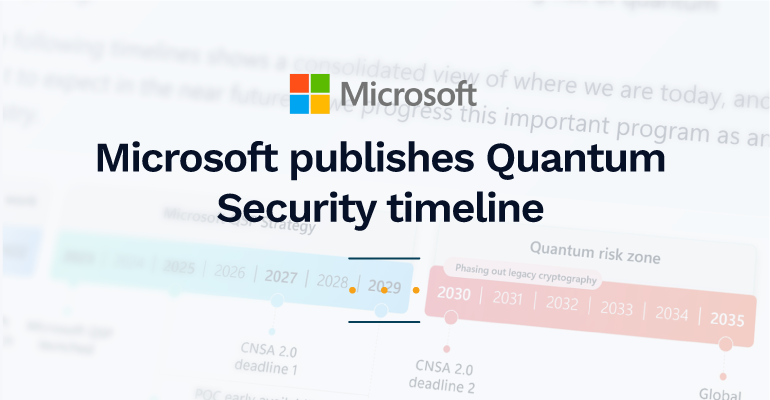Recently, Microsoft published an updated article on Quantum-safe security: Progress towards next-generation cryptography, including a timeline for quantum adoption over the next few years. As part of the tech giant’s Quantum Safe Program (QSP), the goal is to support customers and partners with quantum-safe tools and guidance, promote global research and crypto-agility, and of course to make sure that the Microsoft ecosystem is itself, quantum secure.
The phased rollout falls into three phases, leading to a ‘quantum-safe’ goal of 2033 with early adoption from 2029.
- Security of foundational components
- Protection of core infrastructure
- Integration of PQC across all service endpoints

It’s an ambitious goal, falling two years earlier than the deadline set by most governments (2035), and it’s one that’s likely to have a huge impact. It’s currently thought that around one in eight people regularly use or interact with a Microsoft product or service. Integrating PQC into Windows, Azure, Microsoft 365 and other data services as the 2020s fade into what Microsoft call the ‘Quantum risk zone’ of 2030 and beyond, will protect millions of users.

The QSP is of course, aligned with the US requirements for PQC set by CISA, NIST and the NSA’s CNSA 2.0, and this latest roadmap is a key milestone towards the global effort. Transitioning to PQC is a ‘complex but essential process’ – something resonant with PQShield’s view, and the shortening timeline tells its own story about how Microsoft are approaching the topic. With the phasing out of legacy cryptography already underway, it’s clear that new solutions, built with the next-generation of cryptographic techniques are needed for the quantum age and beyond.

